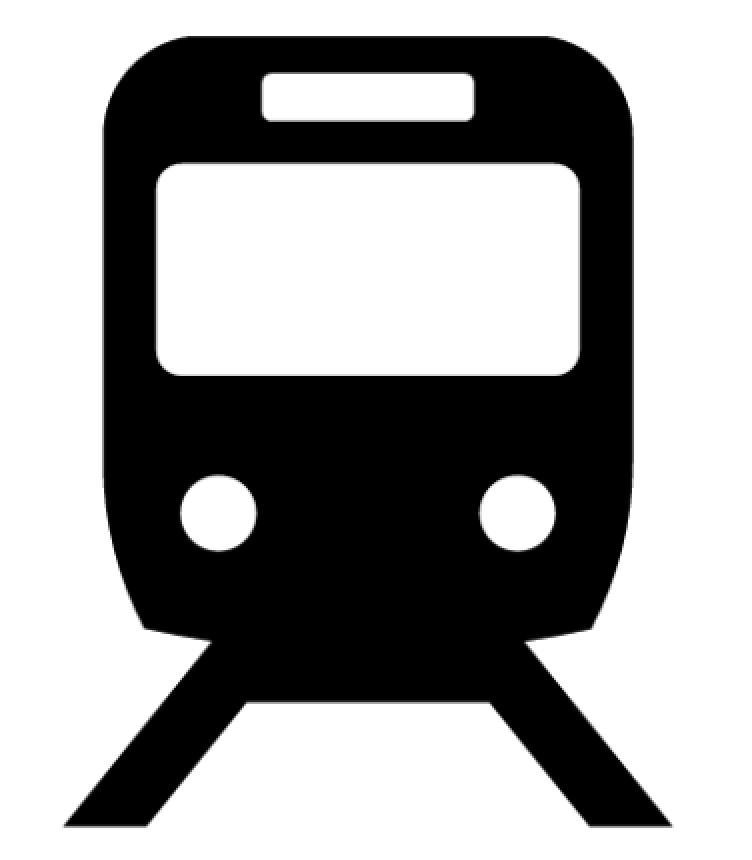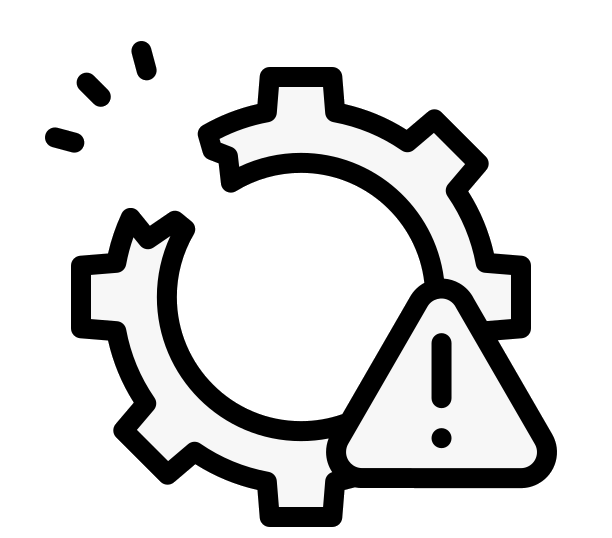| Thingley Junction: how does it work? Posted by Mark A at 11:22, 8th November 2024 |      |
I'm having trouble in understanding how Thingley Junction in its current form, as soon as something's not running to time, doesn't inject large amounts of unreliability into the Great Western Main line and elsewhere.
I'm at a bit of a loss to understand the other components in the regional network - external to the Thingley to Westbury length of line - that are stepping in to patch over the issue that the provision at Thingley appears not fit for purpose. It might be that this isn't as bad as it looks to the layman. I don't know.
Mark
| Re: Thingley Junction: how does it work? Posted by grahame at 23:10, 9th November 2024 |      |
Thingley Junction ... where the Wilts, Somerset and Weymouth railway turned off the Great Western Main Line a couple of miles to the west of Chippenham.
The first section of the line towards Weymouth - as far as Westbury - was opened to the public on 5th September 1848, and in those early days with the fear of facing points, trains making for Westbury had to pass the junction, and reverse into a siding before proceeding. And all this on the 7 foot broad gauge.
The line via Melksham was double, and became more conventionally connected, with a double junction, and was converted to standard gauge from 18th to 22nd June 1874. and at the same time standard gauge was brought to the main line from Swindon making it dual gauge, which was also extended from Thingley to Bathampton in My 1875. and it ran like that until 1892 when the last broad gauge train ran.
Passenger services were all but withdrawn in 1966, intermediate stations closed, and the line from Thingley was singled in 1967. The double junction on the curve had limited the cant that could be applied to the track, and the opportunity of the reduced junction with no diamond crossing in the layout was taken to add more cant on the main line to allow faster trains such as the HSTs to whizz through when they arrived, and with a consequential slowing, and a roll you can feel to this day, on trains on and off the branch. The crossover to get trains headed for Swindon "right line" (left line really!) was moved some distance to the straight track at what is called "Thingley East". There is also a facing crossover at Thingley East - not used in normal operation, but as the main line is now signalled for 2 way working on both tracks, there are occasions when it is very useful.
So apart from that extra facing crossover, Thingley junction had become a minimum layout. No signal box - the single line token instrument being located in the staff room on the platform in Chippenham. Minimum railway, minimum flexibility - but as the sleepy little by-water now had just the occasional train going that way, it was all fine.
At some point - probably 1990 when the signal boxes at the Trowbridge end and Bradford North Curve closed - the single line and token was replaced by a token-less single line section and that added marginally more capacity as there was no need to have an up train reach Chippenham Station before a down train could leave, nor for trains to actually all call or slow right down at Chippenham for exchange, which had been redesigned without pointwork and using just the island platform - change came into effect in 1976.
So - what do you have now?
Once a train has left Westbury for Swindon, the branch had better be clear or it will end up blocking Portsmouth - Cardiff trains while it waits for the train ahead to pass Thingley, or for the train coming from Swindon to get clear of the junction and crossover.
And once a train has left Swindon, the branch had better be clear when it gets to Thingley East or it will end up blocking the main line towards Bristol while it waits. Slightly better that the situation at the other end of the line because the lines ARE Bidirectional so if the conflict is known very well ahead and there's nothing coming the other way, a bit of wrong road running can help sort this out. Trains can also be turned around in the platform at Chippenham, and can be shunted out of the way onto the branch to hold them for a while.
There's some very clever timetable work done to have trains turn up at the right time at both ends, but it is so so easy for it to go wrong. This quiet little backwater with perhaps na couple of trains on a busy day now often has between 30 and 35 - 18 passenger services, freight from Southampton to the Midlands and north and from the Somerset quarries to points east, and railway works trains too. And if anything goes wrong on the Berks and Hants, the London to the West Country expresses suddenly get diverted our way. And that happens increasingly with engineering too - and the powers that be always prioritise the long distance stuff and, it feels, freight contracts too over the vital to us TransWilts service.
The question asked was "what about Thingley Junction". I will follow up with some "what can we do to ..." in the next episode.
| Re: Thingley Junction: how does it work? Posted by Chris from Nailsea at 23:24, 9th November 2024 |      |
I'm having trouble in understanding ...
Well, you started it.

I think the name itself is a clue: 'Thingley Junction'. It's something of an unusual thing, not something you see elsewhere. I'm sure grahame will be able to clarify things.

| Re: Thingley Junction: how does it work? Posted by grahame at 23:38, 9th November 2024 |      |
Here are the Open Train Time diagrams - the extra siding to the right is the one remaining line in the old military freight depot that used to be there - available for putting something out of the way in an emergency I suspect but I have not seen it used recently.


In the diagrams you see freight train 6C21 on the single line, headed for Thingley where it will join the main line and then crossover at Thingley East to head for Swindon.
Edit to add ... 6C21 is an engineers train from Westbury to Southcote Junction just to the south of Reading West - running today only and coming our way, I suspect, so it ends up on the right side of overnight engineering works.
| Re: Thingley Junction: how does it work? Posted by Electric train at 07:16, 10th November 2024 |      |
Here are the Open Train Time diagrams - the extra siding to the right is the one remaining line in the old military freight depot that used to be there - available for putting something out of the way in an emergency I suspect but I have not seen it used recently.
The siding I suspect will be classed as an Engineering" or "Cripple" may also be used as a turn back siding; I suspect its main use in for engineering trains (tampers etc) and for on / off tracking road rail plant
| Re: Thingley Junction: how does it work? Posted by grahame at 07:27, 10th November 2024 |      |
Here are the Open Train Time diagrams - the extra siding to the right is the one remaining line in the old military freight depot that used to be there - available for putting something out of the way in an emergency I suspect but I have not seen it used recently.
The siding I suspect will be classed as an Engineering" or "Cripple" may also be used as a turn back siding; I suspect its main use in for engineering trains (tampers etc) and for on / off tracking road rail plant
Just seen it labelled SKUD on Open Train times. And as I watched the box cleared.
-51- on the down main towards Corsham
-170 on the line via Melksham
| Re: Thingley Junction: how does it work? Posted by grahame at 09:10, 10th November 2024 |      |
Part 2 of my answer ... what could be changed?
I have a whole box of crayons that I can use to make suggestions for robustness and extra capacity and ease of use through Thingley!
* Intermediate Signal
Add an extra signal or two along the single line towards Westbury so that trains can be sent through in "flights".
* Freight contract changes
If they were to pay less for trains that run on time, but more for trains that run late, would it improve the timetable performance? How much do freight operators pay for Q paths that they don't take up?
* Double Track sections / layby
Leave the junction itself as is, but then provide a loop just on the branch to that a train headed for Westbury can get off the main line an wait the upcoming train, and a train coming from Westbury can wait for a path toward Swindon without blocking a train going the other way and heading for Westbury
There is space at Thingley (though the embankment may have degraded and the bridge over the A350 limits the distance the extra goes towards Chippenham) for improved layouts, and also a large basically disused yard area which will allow the following options with only limited earthworks
* Bathampton style layout
Making use of the old reverse-onto-branch siding to have the down Westbury turn off early, then a trailing crossover, then the up Westbury comes in. Trains can then run off snd onto the branch at the same time. As there is no diamond crossing only a limited drop in line speed might be called for. How far towards Westbury the double line goes ... discussion point.
* Electrification
The current setup with aborted overhead stances and an unused (?) substation is absurd and electric trains, whatever the other arrangements, stopping and starting faster (if you know what I mean) and cleaner will be a big help. Freights need to be electric too, of course, and these days most of those head via Melksham.
* Stations at Junction
Just off the A350 and with major housing being built, a Thingley / Chippenham West station makes sense. Fast, frequent regional electric trains will provide changes at the junction, allowing passenger headed west from Melksham to connect and the days of doubling back at Chippenham Town and seeing the train you want to change into leave as yours pulls in will be gone. Chippenham Town is very much a town station ill-located for out of town people, and the new Corsham Station will also be very much a Town station. With a junction station, it will be possible for Westbury / Weymouth locals to turn back there and offer connections without taking any main line paths. This could be done by adding a terminal bay for trains coming up the branch, leaving the branch clear for other trains as they reverse.
* Loop in the yard
Not sure how much this one would gain, but the current siding could be turned into s loop / lay-by. But no access from branch.
Away from Thingley Junction itself ...
* Chippenham 3rd Platform
Various options of turnback and lay-by making use of the third platform face. Could even add an extra track to the north in what is at present a car park - really good case is parking is moved to a Thingley Junction station? I like the idea of the current Bristol-bound platform becoming s bidirectional loop at both ends, with westbound trains reverting to the currently unused platform
* Westbury 4th Platform
Ways away but hugely useful in regulating trains on the single line
* Bradford North Curve
Would allow trains running from Chippenham to Bath to make extra calls as Melksham and Bradford-on-Avon. Sensible for regional electric services for the Avon economic area. A redoubled line from Thingley via Melksham and Bradford-on-Avon would provide a good diversion route if Box tunnel was not available, and there is a school of thought that ask if GBR could save money by closing the tunnel and diverting trains via Badminton for Bristol, and via Bradford-on-Avon for Bath.
* Diverts via Bathampton
To bear in mind that reversible trains can already run down to Bathampton if there's congestion on the line through Melksham. Obvious problem for trains booked to call at Melksham for passengers.
| Re: Thingley Junction: how does it work? Posted by Mark A at 09:18, 10th November 2024 |      |
Thanks for the replies, appreciated. It's emphasised that the rationalised provision reflects a completely different era.
So, at the northern end of the Melksham single line section, it sounds as though the alignment of the GWML is such that a double track turnout is problematic - or is it the fact that it's so close to Chippenham that the line speed can be dropped without affecting the majority of services. That would at least allow for trains to wait and be off the GWML.
The rail bridge over the A350... did someone demand it was built to take 4 tracks? It has that appearance...
At the other end of the single line, not so much of a problem to add a short length of double track to allow Portsmouth - Bristol to clear. (Of course what this really needs is redouble the whole thing and hello, Melksham Station second platform, humungous passenger lift, substantial uplift in passengers, transwilts trains needing to be 3 - 5 carriages...)
Mark
| Re: Thingley Junction: how does it work? Posted by grahame at 09:49, 10th November 2024 |      |
Quick add ...
This trackwork should be possible at Thingley - (stolen from Bathampton).

Trains that calls at Chippenham under electric traction (!) will be pretty well up to full speed by the junction. I do note that Chippenham was remodelled for non-stop expresses of which there are - err - none left.
I don't think the A350 bridge isa problem for the layout suggested ...
| Re: Thingley Junction: how does it work? Posted by bobm at 10:29, 10th November 2024 |      |
The use of the single line also needs a bit of coordination at times. The Chippenham end is controlled from the Swindon desk at the Thames Valley Signalling Centre at Didcot while the Bathampton end comes under Westbury panel. As Graham mentioned you don't want trains waiting at either end for the line to clear and so blocking the movement of other trains.
| Re: Thingley Junction: how does it work? Posted by ellendune at 13:57, 10th November 2024 |      |
* Double Track sections / layby
Leave the junction itself as is, but then provide a loop just on the branch to that a train headed for Westbury can get off the main line an wait the upcoming train, and a train coming from Westbury can wait for a path toward Swindon without blocking a train going the other way and heading for Westbury
There is space at Thingley (though the embankment may have degraded and the bridge over the A350 limits the distance the extra goes towards Chippenham) for improved layouts, and also a large basically disused yard area which will allow the following options with only limited earthworks
Leave the junction itself as is, but then provide a loop just on the branch to that a train headed for Westbury can get off the main line an wait the upcoming train, and a train coming from Westbury can wait for a path toward Swindon without blocking a train going the other way and heading for Westbury
There is space at Thingley (though the embankment may have degraded and the bridge over the A350 limits the distance the extra goes towards Chippenham) for improved layouts, and also a large basically disused yard area which will allow the following options with only limited earthworks
Looking at the satellite it seems that the A350 bridge is significantly wider that require for 2 tracks. Was provision made for more?







